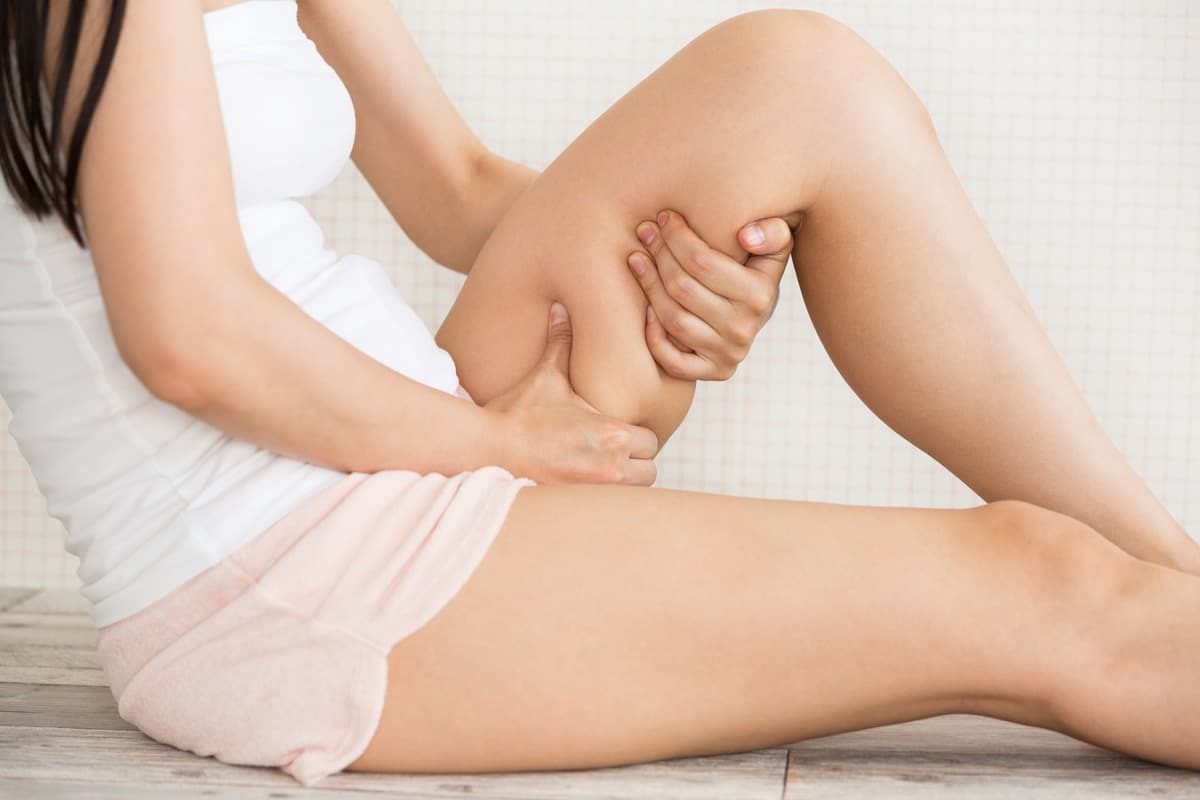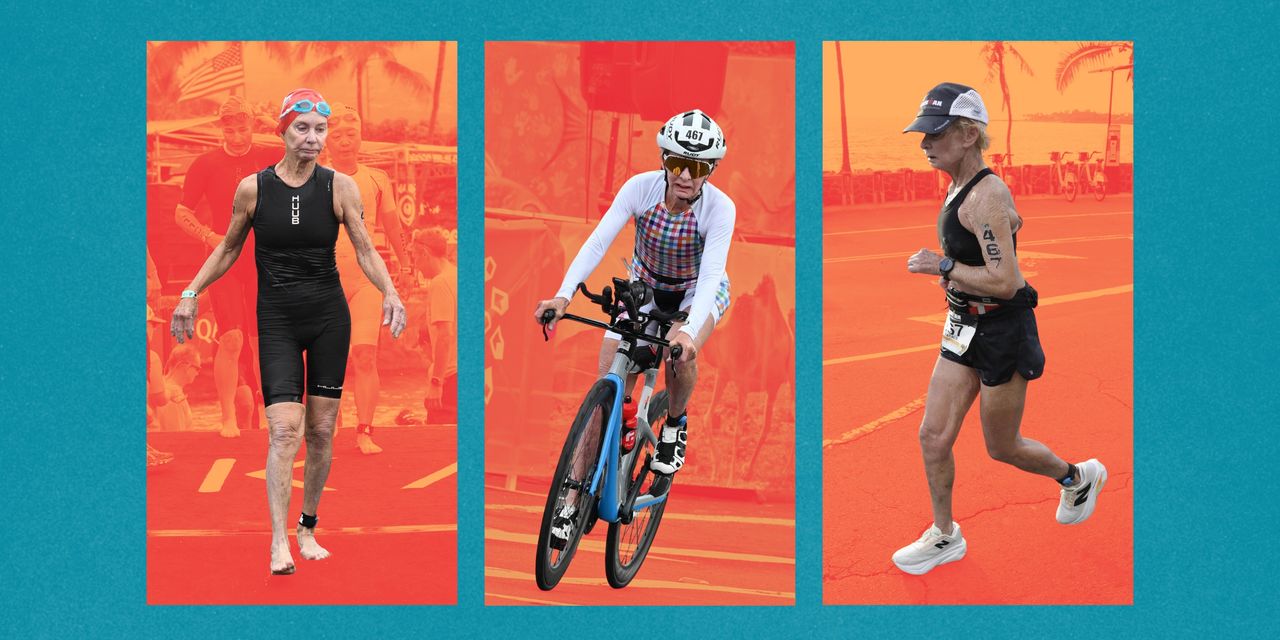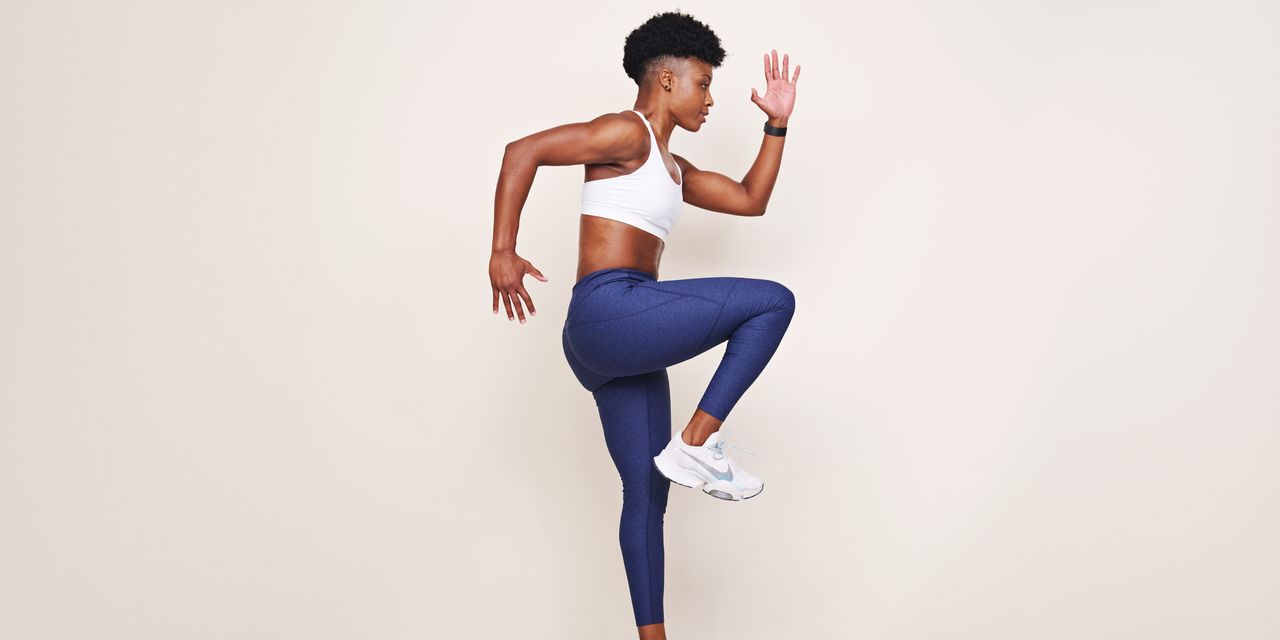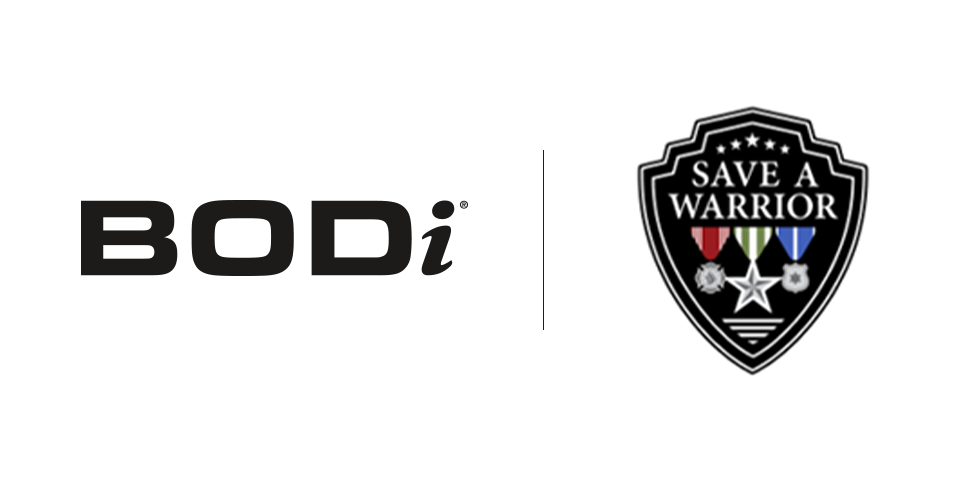How Can You Get Rid Of Inner Thigh Fat

For many people, the inner thigh is a frustrating spot when it comes to weight loss. While abdominal fat often gets the spotlight, the fat that clings to the inner thighs is just as stubborn. For some individuals, it is even more distressing. Whether it is the discomfort from skin chafing, trouble fitting into clothing, or a simple desire to feel more toned, the challenge of inner thigh fat is both physical and emotional.
And unlike fat loss from other areas, slimming down the inner thigh takes more than generic advice. While you cannot spot-reduce fat, there are effective ways to target the region through a combination of smart eating habits, full-body fat-burning workouts, and specialized strengthening exercises.
This article is your complete guide to understanding why inner thigh fat happens and what you can realistically do to reduce it. We will explore the science behind inner thigh fat, break down its causes, and give you clear, actionable methods to support your journey toward stronger, leaner legs, without gimmicks or guesswork.
Understanding Inner Thigh Fat
Inner thigh fat refers to the fat deposits located in the adductor region of your upper leg, between your quadriceps and hamstrings. This area is a common storage site for fat (especially in women) due to a natural tendency to hold more body fat in the lower half. While men typically store excess fat in the abdomen, women often store it in the hips and thighs due to estrogen.
It is important to understand that inner thigh fat is not inherently unhealthy. However, reducing excess fat in this region can be a meaningful goal for those who experience discomfort, limited mobility, or body-image challenges. The key is to combine overall fat loss strategies with muscle-toning movements that focus on this area.
Causes of Excess Thigh Fat
Inner thigh fat develops due to both systemic and localized factors. One primary reason is the overall body fat percentage. When your body stores more fat than it burns, some of it may settle in your thighs. However, even individuals with a healthy weight can have disproportionate fat storage in the thighs due to hormonal or genetic influences.
Another factor is aging. As you grow older, your metabolism naturally slows down. That leads to changes in fat distribution. Estrogen plays a particularly strong role in directing fat storage to the thighs, especially in women. Combined with lower levels of physical activity and possible muscle loss with age, this can result in increased fat and cellulite formation.
Here are some common causes of excess thigh fat:
Genetics
Your genetic makeup plays a significant role in determining where your body stores fat. If your parents or close relatives tend to accumulate fat in the thigh or hip regions, chances are you might experience the same. It is especially common among women, whose bodies are biologically inclined to store fat in the lower body to support reproductive functions. Inner thigh fat is often one of the first to appear and the last to go, due to this inherited pattern.
Hormonal Imbalance
Hormones regulate how your body stores and burns fat. Estrogen, in particular, encourages fat storage in the thighs, hips, and buttocks. That also explains why women are more likely to have stubborn inner thigh fat. As estrogen levels fluctuate during menstrual cycles, pregnancy, or menopause, fat distribution can change. Additionally, low testosterone in men or elevated cortisol (stress hormone) in both genders can increase fat retention in the lower body, including the inner thighs.
Slow Metabolism
With age, the body’s metabolic rate naturally slows down. A slower metabolism means fewer calories are burned at rest. That makes it easier to accumulate fat, even without any change in diet. This age-related fat gain tends to settle in areas like the thighs, especially when muscle mass decreases due to a sedentary lifestyle. Inner thigh fat becomes harder to lose without incorporating metabolic-boosting habits like strength training or regular cardio.
Poor Diet and Water Retention
High-sodium, high-sugar, and ultra-processed foods can lead to water retention, especially around the thighs and hips. A poor diet that lacks lean proteins, fiber, and healthy fats promotes fat storage. Additionally, processed carbs spike insulin levels, encouraging the body to store more fat. Excess salt causes the body to hold onto water, making the thighs appear puffier or swollen, even when the fat mass remains unchanged.
Sedentary Lifestyle
When your body moves less, it burns fewer calories. Inactivity not only prevents fat loss but also reduces muscle tone, which contributes to the appearance of bulkier thighs. Without targeted exercise that activates the adductors (inner thigh muscles), this area can lose definition and accumulate fat over time. It becomes more noticeable in individuals employed in a desk job or following a sedentary routine.
Cellulite
The structure of fat cells, connective tissue, and skin in the thigh area increases the likelihood of dimpling.
How to Lose Thigh Fat?
Reducing inner thigh fat requires a multi-pronged approach that involves fat-burning strategies and targeted muscle-building exercises. While spot reduction is a myth, well-structured programs can certainly tone specific muscle groups while burning overall body fat.
Let us break down the most effective methods.
1. Balanced Nutrition: Your First Line of Defense
Before we discuss workouts, we need to discuss food. What you eat dictates how much fat your body stores. The most reliable method for reducing body fat is to create a moderate calorie deficit. Ideally, consider a deficit of 500 to 750 calories less than your maintenance level.
However, crash diets and extreme calorie restrictions are counterproductive. They slow your metabolism and increase fat retention. The goal is not to starve yourself but to fuel your body with quality nutrients that naturally support fat burning.
Here is what to focus on:
- Lean Protein: Chicken breast, tofu, fish, lentils, and Greek yogurt help build and repair muscles while boosting satiety.
- Healthy Fats: Avocados, olive oil, and nuts support hormonal balance and reduce inflammation.
- Complex Carbohydrates: Whole grains like brown rice, quinoa, and oats provide sustained energy.
- Fiber-Rich Foods: Fruits, vegetables, and legumes help regulate digestion and reduce hunger.
- Hydration: Drinking enough water flushes out toxins, supports metabolism, and minimizes bloating in the thighs.
Avoid processed foods, high-sugar snacks, and refined grains. Also, keep salt intake low to prevent water retention, which can worsen the appearance of thick thighs.
2. High-Intensity Interval Training (HIIT)
HIIT is a metabolic powerhouse that supports rapid fat loss. It involves alternating short bursts of intense activity with brief periods of rest or lower-intensity movement.
This method keeps your heart rate high and your body in fat-burning mode long after the workout is done. It is especially helpful for reducing fat in stubborn areas like the inner thigh. HIIT boosts insulin sensitivity and pushes your body into a higher calorie burn even during rest.
An introductory HIIT session may include:
- 40 seconds of jump squats
- 20 seconds rest
- 40 seconds of mountain climbers
- 20 seconds rest
- 40 seconds of high knees
- 20 seconds rest
- Repeat for 3–4 rounds
To effectively burn thigh fat, aim for at least 2–3 HIIT sessions per week, allowing a day of recovery in between.
3. Strength Training for Lean Muscle
While HIIT burns calories quickly, strength training creates long-term changes in body composition. Muscle tissue burns more calories than fat, even at rest. When you build strength in your lower body, you naturally create a firmer, more toned appearance in your thighs.
Include compound movements and targeted exercises in your routine, such as:
- Lunges (Forward, Side, and Walking)
- Sumo Squats
- Step-Ups
- Deadlifts
- Leg Press and Leg Curls
Strength train at least twice a week, using weights that challenge your muscles by the last few reps. Gradually increase resistance over time to achieve progressive overload.
4. Cardio and Endurance Workouts
Traditional cardio workouts play a vital role in reducing overall body fat. On non-HIIT days, incorporate a mix of low-impact and moderate-intensity cardio.
Cardio options to reduce thigh fat:
- Cycling: Tones the thighs while providing steady fat burn
- Brisk Walking or Incline Treadmill Walks
- Swimming: Low-impact and excellent for joint health
- Dancing: Fun, effective, and works the lower body intensively
Aim for 150 to 300 minutes of cardio per week for consistent fat loss.
5. Yoga and Recovery Exercises
While yoga may not burn calories at the rate HIIT does, it supports flexibility, improves circulation, and enhances lymphatic drainage, which can reduce puffiness in the thigh area. Certain poses like Warrior II, Chair Pose, and Goddess Pose activate your thigh muscles and support toning.
Incorporate yoga or stretching sessions twice a week to promote recovery, reduce stress-induced fat retention, and prevent injuries.
6. Natural Remedies and Cellulite Management
While exercise and diet are your best tools, you can complement them with simple natural remedies that improve the texture and tone of your thighs.
These include:
- Dry Brushing: Stimulates lymphatic drainage and may reduce fluid buildup in the thighs.
- Caffeine-Based Creams: Temporarily tighten skin and improve the appearance of cellulite.
- Anti-Inflammatory Diet: Reducing processed foods and eating more omega-3-rich foods like flaxseeds and fatty fish can reduce inflammation that worsens cellulite.
While these methods do not remove fat directly, they support a smoother, healthier appearance of the thighs.
Exercises for Inner Thigh Fat
Reducing fat from just one area of your body (commonly known as spot reduction) is a myth. However, combining fat-burning cardio with strength-focused movements can help you slim down overall while toning specific muscles, including the inner thighs. This section outlines six targeted exercises to strengthen the inner thighs, boost fat loss, and sculpt leaner legs.
1. Sumo Squat
Sumo squats engage the adductors (muscles of the inner thigh), glutes, and core. The wider stance targets areas that regular squats might miss.
Steps:
- Stand with feet wider than hip-width, toes pointed outward.
- Hold a dumbbell or keep your hands at chest level.
- Lower your body into a squat, keeping your back straight and knees tracking over toes.
- Push through your heels to return to standing, squeezing your thighs at the top.
- Perform 2 sets of 15 reps.
Caution: Avoid this move if you have knee issues. Stick to bodyweight-only versions first.
2. Side Lunge
Side lunges are great for unilateral leg training and help activate the inner thigh muscles on the extended leg.
Steps:
- Stand upright, feet together.
- Step your right leg to the side and bend the right knee while pushing your hips back.
- Keep your left leg straight and your torso upright.
- Push off the right leg to return to standing.
- Repeat on the other side for one full rep. Complete 2 sets of 12 reps per leg.
Caution: Go slow if you have balance issues. Use a wall or chair for support.
3. Curtsy Lunge
This exercise blends balance and toning by crossing the legs, which adds an inner thigh squeeze.
Steps:
- Stand tall and step your right leg diagonally behind the left leg.
- Bend both knees into a curtsy, keeping your chest lifted.
- Press through the left heel to return to the start.
- Repeat 12 times on each leg, completing 2 sets.
Caution: If you have knee sensitivity, decrease the range of motion.
4. Side-Lying Leg Adduction
It is one of the simplest and most effective inner thigh toners, perfect for beginners.
Steps:
- Lie on one side with the top leg bent and resting on the floor.
- Extend the bottom leg straight and engage your core.
- Lift the bottom leg a few inches, hold briefly, and lower.
- Repeat 15 reps per leg, doing 2 sets.
Caution: Keep movements controlled to avoid pulling a groin muscle.
5. Skaters
This cardio-based move enhances endurance while hitting the inner thigh during the cross-back movement.
Steps:
- Begin with feet hip-width apart.
- Leap sideways to the right, landing on the right foot while swinging the left leg behind.
- Immediately push off to the left side.
- Continue side-to-side for 30 seconds. Repeat 3 rounds.
Caution: Focus on form over speed to avoid ankle strain.
6. Inner Thigh Pulse
These tiny movements create a deep burn in the adductors and improve muscle tone.
Steps:
- Lie on your back with legs lifted, knees bent at 90 degrees.
- Bring knees together and begin pulsing inward, like squeezing a ball.
- Perform 25 small pulses, rest, and repeat for 3 sets.
Caution: People with lower back pain should keep their back supported by a mat or towel.
HealthifyMe Note
As a HealthifyMe coach, I often remind my clients that targeting stubborn fat zones (like the inner thighs) is not about intense restriction or overnight fixes. It is about building a strategy. A balanced approach that includes calorie-aware nutrition, strength-building workouts, and consistent movement is where real progress happens. The body is an adaptive system. When you treat it with respect, nourish it mindfully, and work with intention, the changes begin to show, not just in how you look, but how you feel. And yes, your inner thighs will thank you too.
The Final Word
Losing inner thigh fat is a multi-step process rooted in science, patience, and commitment. You cannot shrink one body part in isolation, but you can tone your inner thighs while reducing overall body fat. From modifying your diet to including compound and isolation exercises, everything you do has a cumulative effect. Understanding the root causes (like hormones, genetics, and aging) allows you to work smarter, not harder.
With guidance from tools like HealthifyMe, your journey becomes less of a guessing game. The HealthifyMe AI plans, powered by Coach Ria, are designed to personalize your food intake and workout structure. They help you track real progress, not just weight. Whether it is a meal suggestion, a recovery tip, or a thigh workout tweak, support is always available. Sustainable results do not come from shortcuts; they come from smart strategies, and we are here to make that easier.
Frequently Asked Questions (FAQs)
Q: How can you get rid of inner thigh fat naturally?
A: Inner thigh fat can be reduced naturally through a combination of cardio, strength training, and a nutrient-dense diet. Focus on workouts like lunges, squats, and HIIT, along with a diet rich in lean protein, healthy fats, and fiber. Spot reduction is a myth, but targeting these areas helps tone the muscle underneath.
Q: Do certain foods help burn thigh fat faster?
A: Foods alone cannot burn fat from a specific area, but a diet high in whole foods and low in refined sugars and sodium can support fat loss. Lean proteins, leafy greens, legumes, and healthy fats improve metabolism and reduce water retention, which often makes thighs appear bulkier.
Q: What are the best exercises to lose inner thigh fat?
A: Sumo squats, side lunges, inner thigh pulses, and skaters are great options. These exercises activate the adductors—the muscles along the inner thigh—while improving overall lower body strength. Pair them with cardio or HIIT for best results.
Q: How long does it take to lose inner thigh fat?
A: Timelines vary based on individual factors like body composition, genetics, and lifestyle. With a consistent diet and targeted workouts, some people may notice changes in 4 to 6 weeks. However, long-term results often take 3 to 6 months of focused effort.
Q: Can men lose thigh fat the same way as women?
A: Yes, although men and women store fat differently, the process of losing inner thigh fat is similar. A combination of calorie deficit, strength training, and aerobic activity benefits both genders. Men may respond quicker due to higher lean muscle mass and testosterone levels.
Q: Is it possible to lose thigh fat in a week?
A: You may lose water weight or reduce bloating in a week, but actual fat loss takes time. A quick fix is not sustainable. Instead, follow a structured plan that includes diet adjustments and inner thigh workouts for steady, lasting results.
Q: Are thigh fat and cellulite the same thing?
A: No, they are different. Thigh fat refers to the accumulation of fat in the thigh area, while cellulite is the appearance of dimpled skin caused by fat pressing against connective tissue. Reducing fat through exercise and improving skin elasticity may reduce the visibility of cellulite.
Research Sources
1. Gene–Environment Interactions on Body Fat Distribution
2. Longitudinal associations of the endocrine environment on fat partitioning in postmenopausal women.
3. Role of Body Fat Distribution and the Metabolic Complications of Obesity
4. Cellulite: Current Understanding and Treatment.
5. Caloric Restriction: Implications for Human Cardiometabolic Health




